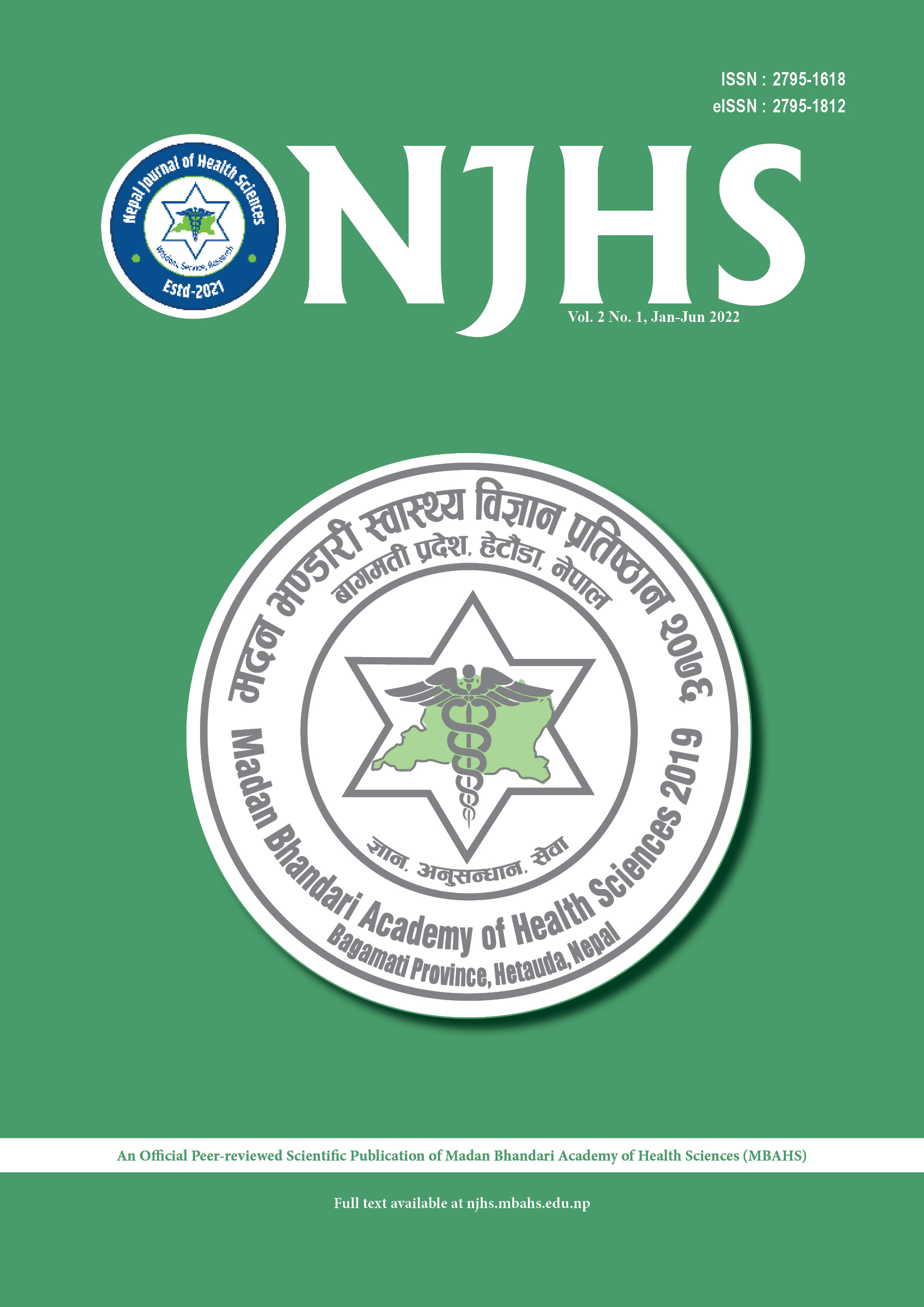Prevalence of C-Shaped Root Canal Systems in Mandibular Second Molars in Nepalese Population
DOI:
https://doi.org/10.3126/njhs.v2i1.47170Keywords:
C-shaped canal, morphology, Nepalese population, prevalence, second molarAbstract
Introduction: Detailed diagnosis, treatment planning, and successful endodontic treatment require an in-depth understanding of the root canal anatomy and its distinguishing features in various ethnic groups.
Objective: The aim of this study was to study the C-shaped canal morphology of mandibular second molars in the Nepalese population by using clinical and radiographic analysis.
Methods: This descriptive cross-sectional study will be designed and implemented using records from dental records from January 2017 to January 2021. Out of 4680 cases, 1800 cases were evaluated as samples based upon inclusion and exclusion criteria. The prevalence of C-shaped root canals according to age, sex, and quadrant was calculated. The morphology of C-shaped root canals was assessed on the basis of radiographic appearance and clinical examination records. Descriptive statistics were presented as numbers and percentages. The Chi-square test was used to check any association between variables. The level of significance was kept at 0.05.
Results: The prevalence of C-shaped canals was 0.105%(n=162) in the second mandibular molar with the highest prevalence being in the young adult age group (18-25) and slightly higher in male cases than females. Unilateral cases (93.83%) of C-shaped were more prevalent than bilateral (6.17%). Group of age and site(unilateral/bilateral) variables were significantly associated with the prevalence of c-shaped canals.
Conclusions: Knowing the anatomical variation and prevalence of the population we are treating is of utmost importance for a favorable outcome. In comparison to the prevalence of other Asian countries like China and Korea, the prevalence of C-shaped canals was comparatively less.





